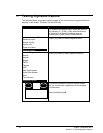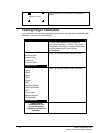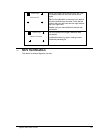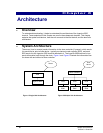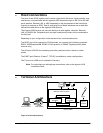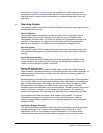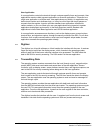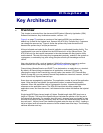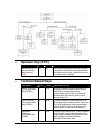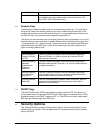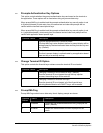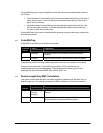
90 Chapter 8 Architecture
Section 8.4 Terminal Architecture
User Application
A user application controls the terminal through customer-specific forms and prompts. User
applications are also called payment applications or financial applications. There can be a
single user application or multiple ones. User applications vary widely. An application may
be thick and contain much business logic, or it may be a thin layer that simply passes on
requests from the register. Ingenico provides standard user applications intended for
certain markets, or you can create your own user applications using Ingenico’s Ingedev
application development environment. In the North American market, standard user
applications include Retail Base Application and UPOS interface application.
A user application accesses secure functions, such as the display screen, screen buttons,
terminal keys, and signature capture, through the security module of the SSA. For all other
functions, such as port communications, smart card, and magnetic stripe reader, the user
application accesses the operating system directly.
8.4.2 Digitizer
The digitizer is a chip with software on it that handles the interface with the user. It receives
finger and stylus input from the display screen, which it sends to the operating system,
where it goes first to the human machine interface to be processed. The HMI sends the
data to the SSA for security screening. The SSA sends it to the user application.
8.4.3 Transmitting Data
The operating system receives commands from the host (through a port), magnetic stripe
reader (MSR), and smart card reader and sends them to the user application. Secure
functions, such as display screen, screen buttons, terminal keys, and signature capture, are
sent to the SSA for security screening before being sent to the user application.
The user application controls the terminal through customer-specific forms and prompts
that it sends to the SSA for security screening. The SSA then sends the data to the display
screen. The user application uses the operating system to send and receive messages to
the host through a port.
The operating system provides the user application with debit and credit card information
from the MSR and stored value from the smart card reader. The operating system encrypts
the user PIN. This encrypted information is sent from the operating system to the user
application. From the user application, it goes from the cash register to the store controller,
and then on to banks and other processors.
The digitizer handles the interface with the user. It receives input from the touch screen and
translates it into data that the operating system and SSA can process and encrypt.



